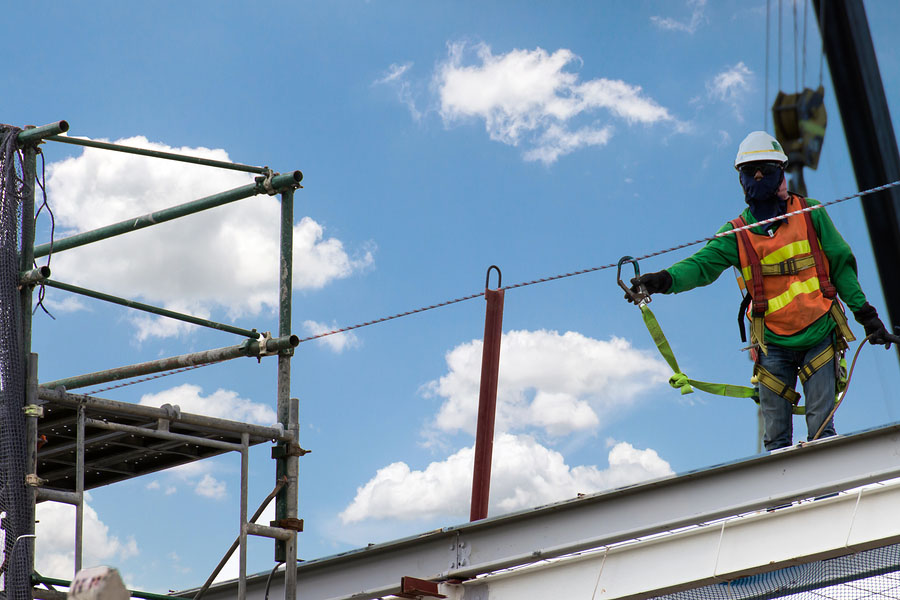Quality Scaffolding Surrey for Both Residential and Commercial Projects
Quality Scaffolding Surrey for Both Residential and Commercial Projects
Blog Article
A Comprehensive Overview to the Necessary Functions of Scaffolding in Modern Building
The landscape of modern building significantly depends on efficient scaffolding systems that focus on advancement, safety, and performance. As jobs grow in complexity, comprehending the crucial attributes of scaffolding comes to be critical for making certain employee security and maximizing job timelines. This guide explores various kinds of scaffolding, highlights key security features, and analyzes material innovations that add to efficiency and sustainability. The implications of these aspects extend much past simple construction techniques, triggering a more detailed look at just how they affect overall project success and worker health.
Sorts Of Scaffolding
Although scaffolding systems can vary widely in layout and application, they typically fall under a number of distinctive categories that satisfy various building and construction needs - Scaffolding. The most typical kinds include supported scaffolding, suspended scaffolding, and rolling scaffolding
Sustained scaffolding is composed of platforms sustained by a structure of poles, which provide a raised and stable functioning surface area. This type is generally made use of for tasks that require significant altitude, such as bricklaying or outside paint.
Suspended scaffolding, conversely, is utilized for tasks calling for access to high altitudes, such as cleaning or repairing building facades. This system hangs from a roof or another framework, enabling employees to lower or increase the system as required.
Rolling scaffolding functions wheels that enable simple flexibility throughout a task site. It is especially helpful for jobs that need regular moving, such as indoor operate in big rooms.
Each type of scaffolding is made with certain applications in mind, making sure that building jobs can be accomplished efficiently and efficiently. Recognizing these categories is essential for picking the ideal scaffolding system to fulfill both task demands and site conditions.
Secret Security Attributes
Safety and security is critical in scaffolding systems, as the prospective threats connected with working at heights can result in severe crashes otherwise effectively handled. Secret safety attributes are important to guarantee the well-being of workers and the integrity of the construction website.
Most importantly, guardrails are critical. These obstacles provide a physical secure against falls, dramatically minimizing the threat of serious injuries. In addition, toe boards are commonly made use of to protect against tools and products from falling off the scaffold, securing workers below.
An additional essential element is making use of non-slip surfaces on platforms. This attribute boosts grasp, especially in negative climate condition, therefore reducing the possibility of slips and drops. Gain access to ladders need to be safely positioned to assist in safe access and exit from the scaffold.
Routine inspections and maintenance of scaffolding systems are additionally essential. These examinations make certain that all parts remain in excellent problem and operating correctly, attending to any kind of wear or damage promptly.
Last but not least, appropriate training for all personnel associated with scaffolding operations is vital to make certain that they understand safety and security procedures and can recognize possible threats. Scaffolding. Jointly, these attributes develop a safer working setting and substantially alleviate risks related to scaffolding
Product Developments
Innovations in product scientific research have considerably affected the scaffolding industry, boosting both safety and performance in modern construction. The introduction of high-strength steel and light weight aluminum alloys has actually reinvented traditional scaffolding systems.
In addition, innovative composite materials, such as fiberglass-reinforced plastics, have actually become practical alternatives. These products are resistant to deterioration and environmental deterioration, hence extending the life expectancy of scaffolding systems, specifically in harsh climate condition. Making use of such products adds to reduce maintenance costs and makes certain consistent efficiency with time.


Layout Considerations
Taking into consideration the complexities of modern-day construction projects, reliable scaffolding design is critical to ensuring both capability and security. Design factors to consider need to incorporate numerous factors, including tons capacity, height, and the specific demands of the construction site. Each job provides one-of-a-kind difficulties, necessitating an adaptable technique to scaffolding systems that can adapt to varying conditions.
Structural stability is vital; as a result, engineers must compute the loads that the scaffolding will sustain, including employees, products, and devices. The choice of products plays a vital duty in making certain the scaffolding can hold up against these tons while staying durable and light-weight. Additionally, the design has to permit very easy access and egress, facilitating the smooth activity of materials and personnel.
Security functions, such as guardrails and non-slip surfaces, should be integrated to decrease dangers of mishaps. In addition, the format needs to take into consideration the surrounding atmosphere, consisting of potential risks and surrounding frameworks. By addressing these style factors to consider, building companies can boost the effectiveness of scaffolding systems and advertise a more secure working environment, eventually adding to the general success of the task.
Upkeep and Inspections
The effectiveness of scaffolding systems extends beyond initial layout and execution; recurring upkeep and normal examinations are essential to guaranteeing their proceeded performance and security throughout the duration of a project. Normal examinations ought to be carried out by qualified personnel to recognize any kind of indications of wear, damage, or instability that might compromise the integrity of the scaffolding.
Maintenance methods need to consist of regular checks of architectural parts, such as fittings, planks, and frameworks, ensuring that all elements continue to be cost-free and secure from corrosion or other damage. In addition, the performance of safety functions, such as guardrails and toe boards, should be assessed to make sure compliance with safety and security policies.
Documentation of all examinations and maintenance tasks is vital for responsibility and regulatory compliance. A systematic approach to record-keeping not just aids in tracking the problem of the scaffolding but likewise provides needed evidence in the event of a case.
Eventually, developing an extensive upkeep and inspection routine will significantly decrease the threat of accidents and improve the total safety of the building website. By focusing on these practices, building supervisors can guard workers and support the task's honesty.

Final Thought
In conclusion, the important features of scaffolding in modern construction incorporate a series of essential components, consisting of diverse types, vital safety and security systems, material innovations, and thoughtful design factors to consider. Stressing this hyperlink security through guardrails and non-slip surface areas, along with improvements in materials like high-strength steel, boosts both efficiency and sustainability. Moreover, regular upkeep and assessments are important for ensuring architectural stability and safety on building and construction sites, ultimately promoting effective project implementation and promoting the health of workers.
The landscape of modern-day construction significantly relies on efficient scaffolding systems that prioritize safety and security, innovation, and effectiveness.Innovations in product science have substantially affected the scaffolding industry, enhancing both safety and effectiveness in modern-day construction. Generally, these product innovations not only enhance the performance and security of scaffolding systems however likewise line up with the sector's press in the direction of sustainability, as several modern-day products are designed to be more environmentally friendly.
Considering the complexities of modern construction projects, effective scaffolding design is paramount to guaranteeing both functionality and safety.In conclusion, the important features of scaffolding in modern building and construction include an array of essential aspects, consisting of click to read varied kinds, crucial security devices, product advancements, and thoughtful style considerations.
Report this page